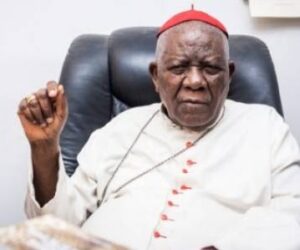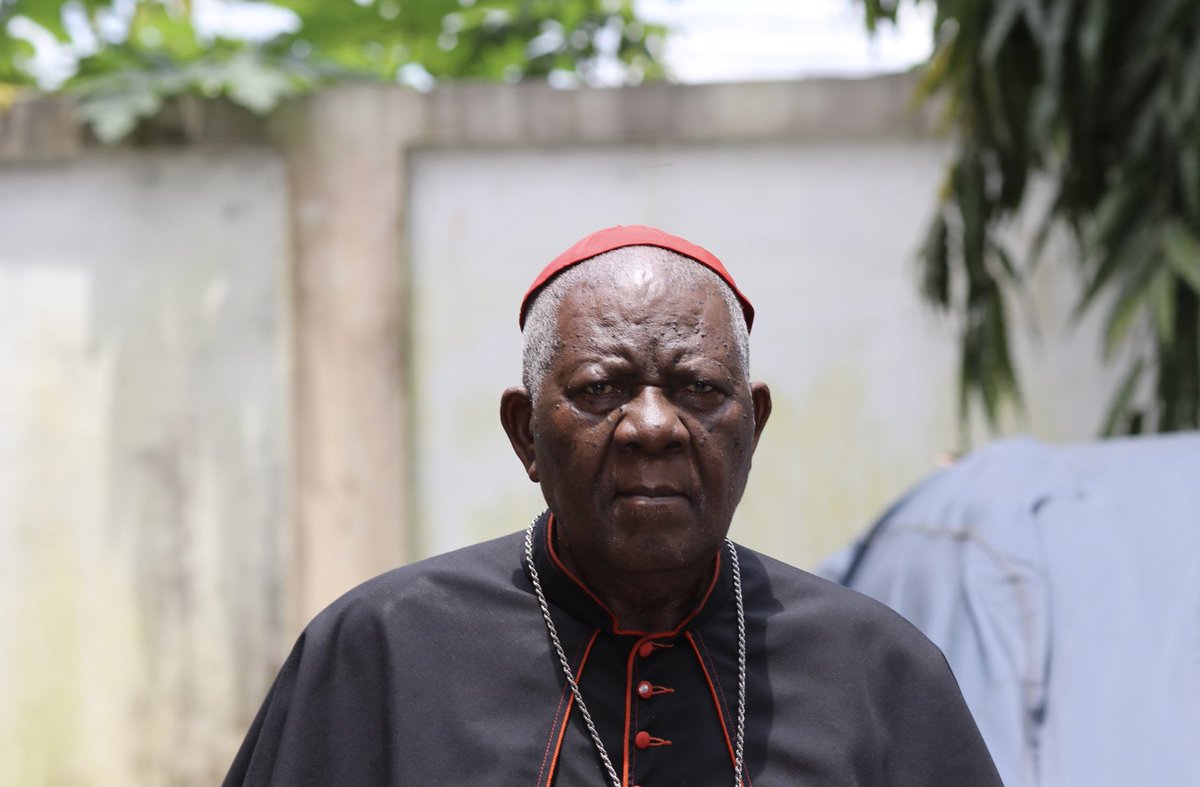(First published in the July-September 2021 edition of Summit Magazine)
One of my favourite Catholic theologians, Bishop Robert Barron of the Diocese of Winona-Rochester in the United States of America, says that there is, or there should be a Petrine and a Pauline element in every Catholic priest, bishop, archbishop, cardinal, or pope. The Petrine element appears when the priest, like Saint Peter, governs, leads, and establishes order in the church, and guides his flock to recognise Jesus as the “Son of the living God” (Mt 16:16). The Pauline element emerges when the priest, like Saint Paul, evangelises with boldness and daring, often leaving the comfort of his rectory for what Pope Francis calls “the peripheries” where the poor live. There, like Saint Paul, he preaches the Gospel from the rooftops, in total defiance of any obstacles that may arise in his path. These two elements are not mutually exclusive. In fact, they coexist in every priest, although one may, depending on the circumstances, take precedence over the other.

Inheriting an archdiocese in ruins!
I saw these two elements embrace and perfectly blend in Christian Wiyghan-nsai Cardinal Tumi, the late emeritus Archbishop of the Archdiocese of Douala in Cameroon. When he took over possession of the Metropolitan See of Douala in 1991, that Archdiocese was in a sorry state – financially and structurally. Its coffers were practically empty and the list of debtors knocking at the church’s door and asking to be paid outstanding loans, stretched a mile long. He inherited an amorphous diocese that sat astride two administrative entities: the Littoral and the Center Provinces. Like Peter, Cardinal Tumi set out to bring order into the diocesan structure, especially financially. He contacted the diocesan creditors (banks and other financial institutions) and renegotiated terms for the reimbursement of the diocesan loans. His long-established reputation for uprightness, integrity and bravery found a favourable echo with many creditors, who agreed to more lenient repayment terms.
With the archdiocesan credibility once more re-established in the eyes of the financial sector, Cardinal Tumi picked up his command baton – his crosier and his mitre — and went out in search of his flock. He went from one parish to another throughout the then vast territory of the Archdiocese of Douala. He visited parishes that had even long forgotten that there was a bishop in the diocese. In his ears must have been ringing God’s warning to the shepherds of Israel who “have scattered my flock [and] driven them away and have not visited them” (Jer 23:2).
After those extensive parish-to-parish contacts, Cardinal Tumi became convinced that he had to dismember his archdiocese for easy administration. Such a breakup would also bring the pastors closer to their sheep. As Pope Francis says, a good shepherd must have the smell of his sheep on him. And the smell of the sheep clings to pastors who dare venture into the peripheries from where they can be in close proximity with their sheep, not those who bury themselves only in clerical duties, useful though such duties may be.
Segmenting the archdiocese
With the head-nod from the Vatican, Cardinal Tumi undertook the delicate task of breaking up his previously single archdiocese into three separate dioceses, namely, the Archdiocese of Douala under his care, the Diocese of Edea with Bishop Jean-Bosco Ntep at its head, and the Diocese of Eseka with Bishop Dieudonné Bogmis, of blessed memory, as the chief shepherd. Having surrendered a huge chunk of his diocese, he then concentrated on a territory covering only the entire city of Douala and the immediate peripheries, including Manoka, one of the small islands in the Wouri creeks.
He began extensive material and structural reforms of his diocese, an act that brought to the fore the Petrine elements of good governance, order and direction. He revolutionised his administration by encouraging his parish priests to allow and encourage the active participation of Christ’s lay faithful at the parochial level, especially those with financial and legal expertise to whom they could always turn for advice, if and when the need arose. He set the tone by seeking assistance from Catholic men and women of the banking sector, the legal profession, academicians, and technicians from all fields. In turn, those invited, for the most part, willingly stepped in to help their bishop navigate some thorny areas that he would otherwise not have known what to do. For example, when he set out to recover all diocesan land that had long been usurped mainly, but not exclusively, by priests, religious and other diocesan officials, he met with understandable resistance. Had it not been for the gracious assistance of such Catholic lay experts in legal and real estate matters, he would not have been able to recover what had been wrongly and illegally snatched from the diocese.
Cardinal Tumi, the builder
Being the great builder and administrator that he was, Cardinal Tumi undertook an extensive renovation of parishes, beginning with the Cathedral parish. He tore down the old Bishop’s House which he replaced with a much more modern structure with many rooms that can house many visitors (bishops, priests, religious and laity, for example). He carried out extensive work inside the Cathedral, painting the walls and providing new pews and ceiling fans. Outside, he paved the Cathedral courtyard where previously there had been just massive sludge whenever it rained. With the paved surface, church goers can now linger around and socialise before going back home. He undertook the building of new hospitals, schools and colleges. He set up a printing press, “Maison Catholique de la Communication Sociale” (MACACOS) [Catholic Media House] which, at its height, churned out almost three-quarters of the newspapers published in Cameroon. He was the first bishop in Cameroon to set up a diocesan radio station, Radio Veritas, a powerful tool of evangelisation that was met by general applause from Catholics and non-Catholics alike living in the city of Douala.
Cardinal Tumi, the writer
Like Saint Paul, Cardinal Tumi also preached extensively through his writings. When he was still the Rector of Saint Thomas Aquinas Major Seminary of Bambui, he already made a name for himself through his contributions in Cameroon Panorama, the monthly magazine published by the Diocese of Buea. One of his interventions, which became famous, was his reaction to an article that Professor Bernard Nsokika Fonlon, may he rest in peace, had published in the said monthly magazine to congratulate the Bishop of Buea, Monsignor Pius Suh Awa, and the Bishop of Bamenda, Monsignor Paul Mbiybe Verdzekov, for creating the Saint Thomas Aquinas Major Seminary, which had been entrusted to his care. The exchanges between the two men were well received by the readership and sparked animated discussions for several months in the English-speaking intellectual circles of the time. One day, I reminded him of those exchanges and he merely smiled.
His homilies were always well structured, often handwritten. His pastoral letters were also straight to the point. He even wrote a letter to the highwaymen at a time when our country was in the grips of serious political turmoil, urging them to stop their harassment of peaceful citizens. He often liked to say that even if the children of the elementary school invited him to come and talk to them, he always made sure to write down on a piece of paper what he was going to say to them so as not to bore them with useless words. That is why he was often angry with some of his priests who failed to take the time to prepare their homilies properly. He often said that he was not asking them to write down homilies to read them slavishly in front of their flock, but to always have a note-pad in hand so as not to stray from the topic at hand. His Pauline side led him to always put in writing the teachings he gave to his faithful and to all men and women of good will.
It was in the 1990s, at the time of great political unrest that preceded the advent of multiparty politics in Cameroon, that he wrote his first book entitled The Two Political Regimes of Ahmadou Ahidjo, Paul Biya and Cardinal Christian Tumi, Priest.[1] Some people, especially in the country’s ruling circles, had accused him of being the hidden face of the opposition to the ruling power, which he had always denied until his last breath. Another book, entitled Ma Foi: un Cameroun à mettre à neuf[2], followed shortly after. In both books, it is still the priest who pleads for peace and social justice in his country, a country he loved so much, and for which he suffered so much, especially during the last months of his life on earth. In his last peace-crusading trips to his native north-west region prior to his death, he was captured by separatist forces and kept overnight under very harsh conditions. His last book, entitled My Night in Captivity[3], recounts the dreadful experience of that one night in the hands of the separatists fighting for what they call a separate “Ambazonian nation”.
Cardinal Tumi, the evangeliser, promoted priestly and religious vocations that greatly boomed on his watch. He did not only form priests locally, he also sent some of them to seminaries and universities all over the world, particularly Europe and North America, and those priests came back to evangelise with “new ardour, methods and expression,” to borrow the felicitous words of Saint John Paul II.
In Christian Wiyghan Cardinal Tumi, the Petrine side of him (leadership, order, direction) blended harmoniously with the Pauline side (evangeliser, theologian, assembler of the sheep) to give the Archdiocese of Douala a unique spot in the modern history of the Catholic Church in Cameroon. Without his insistence on order and discipline, tempered by compassion – his Petrine side — God’s flock could easily have dispersed and the Church could have degenerated into chaos. Like Saint Peter, he put his soul and heart into building the church in the Archdiocese of Douala, never letting the forces of evil from without the church and, more insidiously, from within the church itself – numerous though such internal disruptive forces were — to prevail over God’s church. Like Saint Paul, he preached the Gospel with boldness, vigour and creative energy, caring less what anyone – in political circles or within the church itself – thought of him. Like his Master Jesus Christ, he preached the Gospel, in season and out of season, whether anyone was listening to him or not.
May the soul of Christian Wiyghan-nsai Cardinal Tumi find rest in the Lord. Amen.
____________________________________________
[1] Douala, Imprimerie Macacos, 2006,
[2] Douala, Editions Veritas
[3] Spears Books, 2021.



